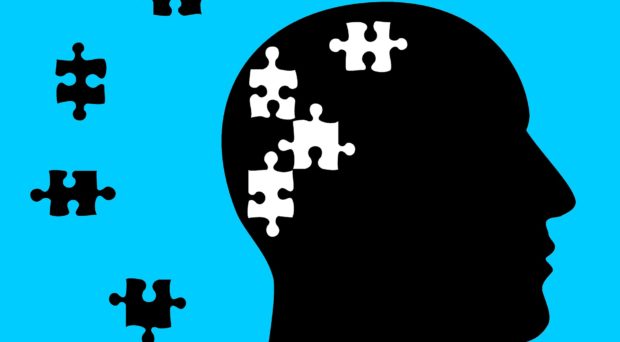
In an effort to flatten the curve and promote containment of the novel coronavirus (COVID-19), safety precautions, including stay at home measures, have been enacted. However, several members of the lower-waged workforce, such as healthcare support staff, bus drivers, and sanitation workers, referred to collectively as “essential” workers, were deemed exempt from such policies; over 90% of workers who are in the bottom 25 income percentile do not have the ability to work from home.[1]In addition to mental health challenges associated with serving during COVID-19, the experiences of essential workers of color is complicated by the recent acts of structural violence against black bodies, a microcosm of the pandemic of racism that has plagued the U.S. for 400 years. Consequently, it is worth framing the discussion of mental health challenges and stressors of essential workers during COVID-19 in the context of identity.
How Race and Class Complicate the Mental Health Challenges Faced by Essential Workers during COVID-19
It is critical to highlight the intersectionality of race and class, and how people of color are disproportionately represented in low-wage, high-risk occupations deemed essential. Over 53 million workers aged 18 to 64 in the U.S. have median annual earnings of $17,950, and both Black and Latinx workers are overrepresented in these low-waged positions.[2]超过650万的美国医疗保健支持工人,包括家庭健康助手,医疗助理和技术人员的收入低于国家中位工资,而且通常缺乏基本的工作场所福利。[3]More specifically, over 50% of these workers do not have paid sick leave and over 75% of them do not have access to paid personal leave.[4]因此,尽管害怕冒着生命和家庭健康的危险,但这些劳动力成员仍在继续举报以生存。
重要的工人通常也是有色人种的低矮人[5]其职责要求他们与他人紧密近距离接近。[6],,,,[7]For example, nursing home employees, whose median pay for nursing assistants was $29,640 in 2019,[8]在Covid-19毁灭性的空间中工作。[9]As a result, these essential workers have witnessed their elderly patients become sick and pass away with no time to grieve because of limited to no paid time off or sick leave. Similarly, environmental service workers at hospitals who disinfect hospital rooms occupied by COVID-19 patients, as well as sanitation workers who handle everyone’s trash, face new risks on a daily basis with limited access to personal protective equipment (PPE) or hand sanitizers.[10]他们的工作正在挽救生命,但公众很少认识到大流行期间工作的重要性和艰辛。
Emerging data has shown low-waged workers are struggling with stress, burnout, nightmares, and insomnia.[11]Facing stressful situations on a daily basis not only causes mental health problems (e.g., depression, anxiety, post-traumatic stress disorders),[12]but also physical health issues (e.g., high blood pressure, cardiovascular disease).[13]但是,与大流行之前和期间高薪的,有执照的医疗保健提供者相比,我们对心理健康状况和福祉的状况的了解得多。同样,有越来越多的证据表明,库维德-19不是巨大的均衡器。相反,在当前的大流行中,在其他健康状况中观察到的种族/种族差异也很明显。[14]因此,低层的有色人种的基本工人不仅在客户,患者和客户身上,而且对家庭成员,朋友和其他亲人的死亡和悲伤程度不成比例。
Recommendations for Policy and Practice
作为心理健康临床医生和公共卫生研究人员,我们提出了以下建议:
Expanding and diversifying the mental health workforce.National shortages of mental health workers existed before this pandemic began, and are projected to get worse over the next five years.[15]作为重要的工人遭受的心理健康,they must be practically able to access the mental health care they need. Thus, financial resources should be directed towards expanding the number of mental health professionals. There is a particular need to diversify the mental healthcare workforce. There is a strong body of literature supporting the need to increase the proportion of racial/ethnic minority providers as a means for promoting trust and culturally and linguistically competent care in the therapeutic relationship.[16]Thus, dedicating Federal funds towards the recruitment and retention of a diverse mental healthcare workforce is a key policy recommendation for addressing the acute and chronic mental health needs of low-income essential workers of color, as well as reducing health disparities.
加强员工援助计划。当前的资源虽然非常需要和有帮助,但倾向于专注于临床医生的心理健康和福祉。[17]Practical resources for healthcare support workers and non-healthcare essential workers are hard to find. Cost and stigma are the top barriers to mental health care access.[18]Employers and leadership should assess the mental health needs of employees, normalize help-seeking behavior, and expand access to free and confidential support and resources for their employees. Additionally, open dialogue about mental health will help lessen stigma towards mental disorders. This pandemic may be a turning point where we talk about mental health openly enough so people feel as comfortable seeking treatment for mental health and substance use concerns as they do for any other common health condition.
同伴支持系统的利用。医疗保健组织和领导层应考虑创建和/或在工作中放大同伴支持系统。[19]同伴支持是满足弱势基本工人需求的关键因素。为了帮助增加访问权限并鼓励心理健康服务,应尽可能多的人进行心理健康急救(MHFA)培训。非临床专业人员使用MHFA鼓励寻求行为并确定困扰和心理健康状况的迹象。将MHFA培训扩大到这些重要工人可以帮助减少自杀,并确保他们寻求确定需要的护理。15
We can anticipate a greater need for mental health services for essential workers—a need that will last beyond the duration of the current public health crisis. Taking care of people who have served us throughout this pandemic must be our top priority.
References
[1] U.S. Bureau of Labor Statistics. Economic News Release. Table 1. Workers who could work at home, did work at home, and were paid for work at home, by selected characteristics, averages for the period 2017-2018. 2019. Available at计画ps://www.bls.gov/news.release/flex2.t01.htm2020年5月4日访问。
[2]Ross, M. & Bateman, N. Meet the low-wage workforce. 2019. Available at计画ps://www.brookings.edu/research/meet-the-low-wage-workforce/2020年5月4日访问
[3]美国劳工统计局。Occupational Employment Statistics. Occupational Employment and Wages, May 2019. 31-0000 Healthcare Support Occupations (Major Group). 2020. Available athttps://www.bls.gov/oes/current/oes310000.htm2020年5月4日访问。
[4]美国劳工统计局。Employee Benefits Survey. 2018. Accessed May 4, 2020.https://www.bls.gov/ncs/ebs/benefits/2018/
[5]疾病预防与控制中心。冠状病毒疾病2019(COVID-19)。种族和少数民族群体中的Covid-19。2020。https://www.cdc.gov/coronavirus/2019-ncov/need-extra-precautions/racial-ennic-minorities.html2020年5月4日访问。
[6]Levenson M. 11 Days After Fuming About a Coughing Passenger, a Bus Driver Died From the Coronavirus.纽约时报。2020年https://www.nytimes.com/2020/04/04/us/detroit-bus-driver-coronavirus.html2020年5月4日。
[7]Bhattarai A.“感觉就像一个战区”:随着他们的越来越多,杂货店工作者越来越害怕在工作中出现。Washington Post.2020年计画ps://www.washingtonpost.com/business/2020/04/12/grocery-worker-fear-death-coronavirus/2020年5月4日访问。
[8]美国劳工统计局。职业前景手册:护理助理和秩序。2019年计画ps://www.bls.gov/OOH/healthcare/nursing-assistants.htm#:~:text=The%20median%20annual%20wage%20for,was%20%2428%2C980%20in%20May%202019Accessed June 15, 2020.
[9]Yourish KK, Lai R, Ivory D. One-third of all U.S. coronavirus deaths are nursing home residents or workers. 2020. Available at计画ps://www.nytimes.com/interactive/2020/05/09/us/coronavirus-cases-nursing-homes-us.html。2020年6月20日访问。
[10]Ducharme J. ‘No One Mentions the People Who Clean It Up’: What It’s Like to Clean Professionally During the COVID-19 Outbreak.时间。2020年https://time.com/5810911/covid-19-cleaners-janitors/2020年5月4日访问。
[11]Hammonds C,Kerrissey J.“我们不是英雄,因为它不是选择”:对Covid-19期间基本工人的安全和保障的调查。2020年https://www.umass.edu/lrrc/sites/default/files/western%20mass%20sential%20Worker%20Worker%20Survey%20-%20-%20May%20202020202020202020202020202020202020202020202020202020202020202020202020202020202020020.pdfAccessed June 15, 2020.
[12]Jackson JS, Knight KM, Rafferty JA. Race and unhealthy behaviors: chronic stress, the HPA axis, and physical and mental health disparities over the life course. Am J Public Health. 2010;100:933-939.
[13]Sturgeon JA, Arewasikporn A, Okun MA. The psychosocial context of financial stress: implications for inflammation and psychological health. Psychosom Med. 2016;78(2):134-143.
[14]Webb Hooper M,NápolesAM,Pérez-stable EJ。Covid-19和种族/种族差异。贾马。Published online May 11, 2020.
[15]美国卫生与公共服务部。国家对选定行为健康从业人员的供求的预测:2013 - 2025年。2016年计画ps://bhw.hrsa.gov/sites/default/files/bhw/health-workforce-analysis/research/projections/behavioral-health2013-2025.pdfAccessed May 21, 2020.
[16]McGuire TG, Miranda J. New evidence regarding racial and ethnic disparities in mental health: policy implications. Health Affairs。2008;27(2):393-403.
[17]Shapiro J, Galowitz P. Peer support for clinicians: a programmatic approach. Acad Med. 2016;91(9):1200-1204.
[18]Budhwani H,de P.在美国医疗保健环境中感知的污名以及美国有色人种的身心健康。Health Equity. 2019;3(1):73-80.
[19]Hammerback K, Hannon PA, Harris JR. Perspectives on Workplace Health Promotion Among Employees in Low-Wage Industries. Am J Health Promot. 2015;29(6):384-392.
Comments